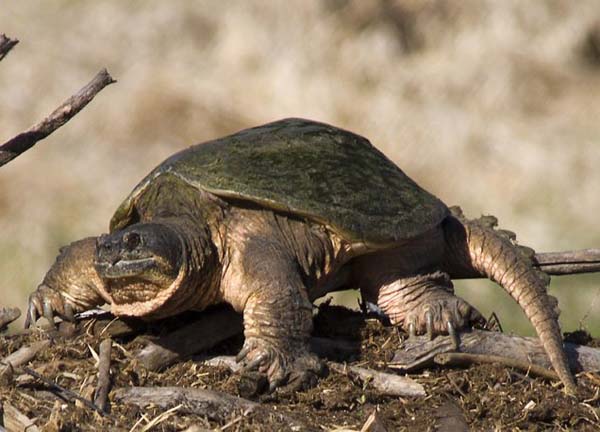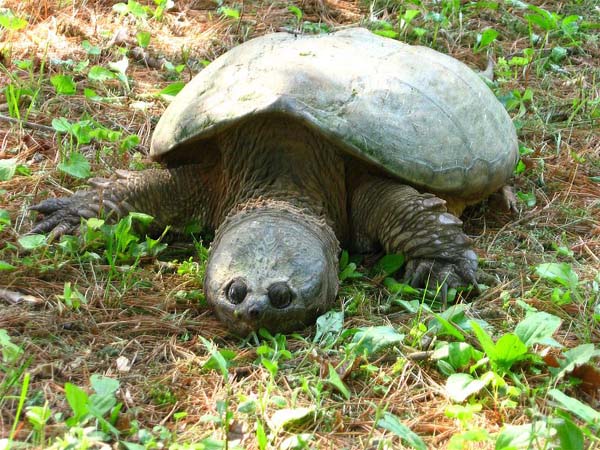Wildlife North America . com North American Animals - mamals, birds, reptiles, insects |
Common Snapping Turtle (Chelydra serpentina)
Common Snapping Turtle Photograph by Mjbaker. Some rights reserved. (view image details) 
Common Snapping Turtle Photograph by Smee. License: Public Domain. (view image details)
COMMON SNAPPING TURTLE FACTS
DescriptionThe Common Snapping Turtle is a large freshwater turtle. The turtle has an agile head and neck (the scientific name "serpentina" means snake-like). The nostrils are positioned on the tip of the snout so it can breath while almost entirely underwater. Common Snapping Turtle can be quite aggressive when out of the water, and snap with their powerful beak-like jaws. They have muscular build an a ridged carapace. Other Names Common Snapper Size carapace length 25cm - 50cm. Weight 4.5kg - 16kg. Very large captive specimens can weigh up to 34kg Environment shallow ponds, shallow lakes, streams, brackish estuaries. Common Snapping Turtles sometimes bask by floating on the surface with only their carapace exposed, or bask on fallen logs. In shallow waters they sometimes lie in the mud with only the head exposed. Food Snapping turtles are omnivores, eating both plant and animal food. They prey on invertebrates, fish, frogs, small snakes, small turtles, birds, small mammals. Breeding The Common Snapping Turtle mates from April through November, with peak egg laying season in June and July. Females lay their eggs in sandy soil on land, often some distance from the water. She lays 25 to 80 eggs into the nest and covers them with sand. Eggs hatch after 9 to 18 weeks depending on temperature. Range ranges from south eastern Canada west to the Rocky Mountains, and down throughout Mexico and Central America as far south as Ecuador. Notes The Common Snapping Turtle has strong jaws and can snap with speed, and are capable of biting off a finger or toe. Do not try to life a turtle by the tail, as this can damage the tail or spine. If you have to move one, lift it gently with a shovel. If you must use your hands, scoop it up by placing your hands behind the turtle's hind legs and gripping the turtle between the fingers and thumbs. Lift it just above the ground in case it squirms out of your hands. Even small turtles are difficult to handle as they will wriggle their legs and try to arch their long neck back to bite. Classification
Home | Mammals | Reptiles | Birds | Insects | Privacy Policy | Disclaimer | Contact Us |